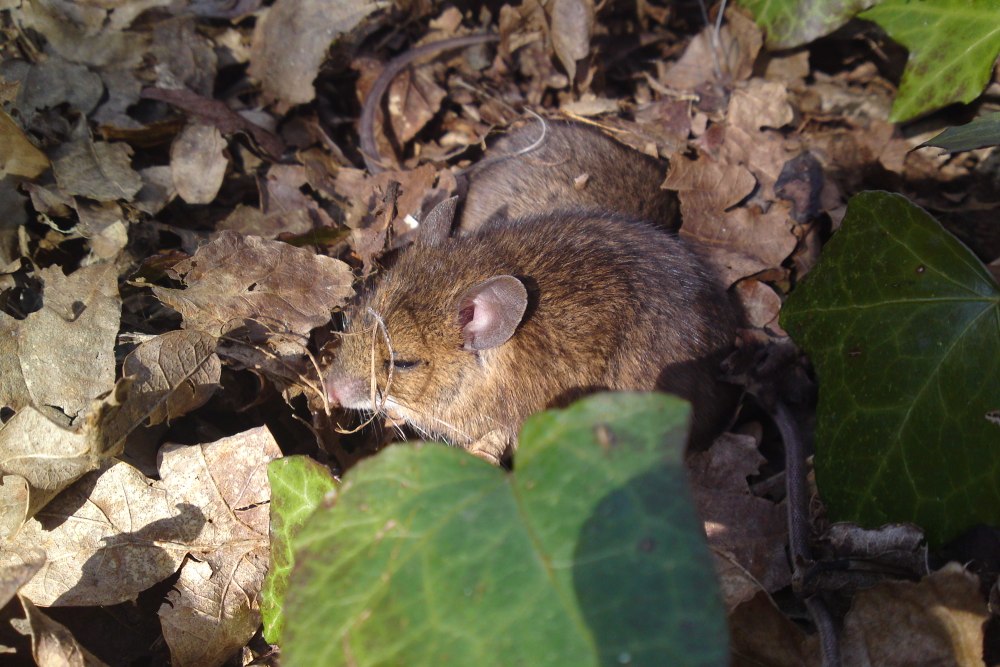Wood (or Long-tailed field) mouse

Status
Native, common and widespread
Population
39,600,000
Scientific name
Apodemus sylvaticus
The wood mouse is one of the most abundant and ubiquitous wild rodents in Britain. They have yellowish-brown fur on their backs and pale grey fur on their underside. They have a small yellowish patch of fur between their front legs, but this is not as pronounced as in yellow-necked mice. They have large eyes and ears, and a long, dark, hairless tail, which they trail on the ground behind them. Wood mice are mostly nocturnal, run fast and are very agile climbers. They dig underground burrows in which to nest that probably survive from one generation to the next. Food is stored in chambers for the winter months.
Head-body length: 8 – 11cm
Tail length: As long as the head and body
Weight: 16 – 18g in winter; 25 – 27g in summer
Lifespan: Up to 20 months
Reproduction
Litters of 4 – 8 young are born between March and November, and females can have up to 6 litters in a year. The young are weaned by three weeks and are sexually mature within two months.
Diet
Mainly seeds, but also buds, fruits, nuts, snails, insects, fungi, moss and tree bark.
Habitat
Primarily a woodland species, but they are found in most habitats, including arable land, ungrazed grassland, hedgerows and field margins, as well as gardens and buildings.
Predators
Owls, foxes, mustelids, kestrels and cats.
Threats
Agricultural pesticides.
Conservation status
GB Red List: Least Concern (LC).
Population size and distribution
GB population: 39,600,00. Widely distributed throughout Great Britain and Ireland, including most of the large islands and many of the small ones.
Did you know?
Wood mice spend a lot of time grooming. They wipe their face and ears with their fore feet and pass their tails through their mouths. Males and females will often groom each other.
